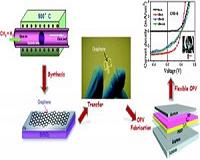 |
Leeds, UK (SPX) Aug 02, 2010 Don't pour that dirty fat from the frier down the sink - it could be used to make the fuel of the future. Hydrogen has been tipped as a cleaner, greener alternative to fossil fuels. But scientists have struggled to find a way to make it that doesn't consume vast amounts of energy, use up scarce natural resources, or spew out high levels of greenhouse gas. Researchers at the University of Leeds have now found an energy-efficient way to make hydrogen out of used vegetable oils discarded by restaurants, takeaways and pubs. Not only does the process generate some of the energy needed to make the hydrogen gas itself, it is also essentially carbon-neutral. "We are working towards a vision of the hydrogen economy," said Dr Valerie Dupont, who is leading the Leeds-based project. "Hydrogen -based fuel could potentially be used to run our cars or even drive larger scale power plants, generating the electricity we need to light our buildings, run our kettles and fridges, and power our computers. But hydrogen does not occur naturally, it has to be made. With this process, we can do that in a sustainable way by recycling waste materials, such as used cooking oil." Hydrogen can already be made quite easily from simple fossil fuels, such as natural gas. The fuel is mixed with steam in the presence of a metal catalyst then heated to above 800 degrees centigrade to form hydrogen and carbon dioxide. However when much more complex fuels are used, such as waste vegetable oil, it is difficult to make very much hydrogen using this method without raising the temperature even further. The reactions could be run at lower temperatures but the catalysts would quickly become poisoned by residues left over from the dirty oil. In short, the process is not only expensive but also environmentally unsound. Dr Dupont and colleagues have perfected a two-stage process that is essentially self-heating. To begin, the nickel catalyst is blasted with air to form nickel oxide - an 'exothermic' process that can raise the starting temperature of 650 degrees by another 200 degrees. The fuel and steam mixture then reacts with the hot nickel oxide to make hydrogen and carbon dioxide. The researchers also added a special 'sorbent' material to trap all the carbon dioxide produced, leaving them with pure hydrogen gas. This trick eliminated the greenhouse gas emissions and also forced the reaction to keep running, increasing the amount of hydrogen made. "The hydrogen starts to be made almost straight away, you don't have to wait for all of the catalyst to be turned into pure nickel," Dr Dupont said. "So as well as the generation of heat, this is another way that makes the process very efficient." The researchers have shown that the two-stage process works well in a small, test reactor. They now want to scale-up the trials and make larger volumes of hydrogen gas over longer periods of time. "The beauty of this technology is that it can be operated at any scale. It is just as suitable for use at a filling station as at a small power plant," Dr Dupont said. "If we could create more of our electricity locally using hydrogen-powered fuel cells, then we could cut the amount of energy lost during transmission down power lines."
Share This Article With Planet Earth
Related Links University of Leeds Powering The World in the 21st Century at Energy-Daily.com
 Joggers T-Shirts May Someday Power Their Cell Phones
Joggers T-Shirts May Someday Power Their Cell PhonesLos Angeles CA (SPX) Jul 29, 2010 A University of Southern California team has produced flexible transparent carbon atom films that the researchers say have great potential for a new breed of solar cells. "Organic photovoltaic (OPV) cells have been proposed as a means to achieve low cost energy due to their ease of manufacture, light weight, and compatibility with flexible substrates," wrote Chongwu Zhou, a professor of el ... read more |
|
| The content herein, unless otherwise known to be public domain, are Copyright 1995-2010 - SpaceDaily. AFP and UPI Wire Stories are copyright Agence France-Presse and United Press International. ESA Portal Reports are copyright European Space Agency. All NASA sourced material is public domain. Additional copyrights may apply in whole or part to other bona fide parties. Advertising does not imply endorsement,agreement or approval of any opinions, statements or information provided by SpaceDaily on any Web page published or hosted by SpaceDaily. Privacy Statement |